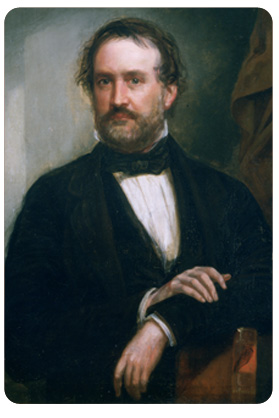 |
 |
||||||
 |
|||||||
 |
|||||||
Portrait Description From Vermont to St. Louis Roswell Field was a devoted husband and father. He often went to the nursery to play with his sons and was also known to sit on the front steps and serenade the neighborhood with his violin music. But family life changed dramatically in 1856 when his wife, Frances, died. Soon after, Roswell sent his sons to live with their aunt in Massachusetts. However, Field continued to rent the house on Walsh’s Row so his sons could have a place to return during vacations. In 1864, he gave up the house and moved into his office apartment. On July 12, 1869, Roswell Martin Field died at age sixty-two. Field’s Fight for Dred Scott Freedom While these cases were common in the federal courts, Field's legal strategy was unique. He was the first lawyer to argue a freedom suit based on diversity jurisdiction; which results from different parties in a lawsuit residing in different states or territories. Roswell argued that Dred Scott, as a resident of Missouri, was a citizen of that state. Even though citizenship did not entail all the rights it does today, it did include the concept that a citizen could not be forced into another territory against his will. This legal concept is what brought the case to the United States Supreme Court, where Roswell’s colleague Montgomery Blair argued that Dred Scott became a free man upon being taken into free territory. On March 6, 1857, Chief Justice Roger B. Taney delivered the opinion of the Court, arguing that whether slave or free, blacks were not citizens, and had no standing to sue in Court. Dred Scott, he noted, was private property, and could thus be taken anywhere. This effectively invalidated the thirty-year-old Missouri Compromise, which had prohibited slavery in territories north of Missouri. This decision would be noticed by an unknown lawyer in Illinois named Abraham Lincoln, who would use it as part of his 1860 Presidential platform. Roswell Field's contribution to the legal system would eventually help free an entire race of people. |
|
||||||
| About Us | Partners | Press Room | Donate | Site Map | Contact ©2010 Urban Museum Collaborative |
|||||||
